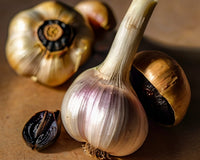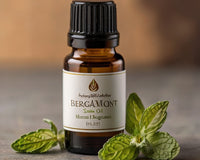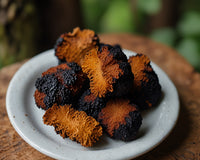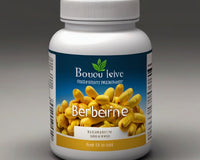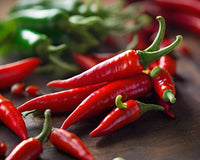What is malic acid?
Malic acid is an alpha hydroxy acid found in some fruits and wine. It is used in food and cosmetics and sometimes as medicine.
Malic acid has a sour taste. When applied to the skin, this helps remove dead skin cells. Its sour taste also helps people with dry mouth produce more saliva. Malic acid is also involved in the Krebs cycle. This is the process the body uses to generate energy. People often use malic acid to treat dry mouth.
It is also used to treat acne, fibromyalgia, fatigue, skin wrinkles, and many other conditions, but there is no good scientific evidence to support these uses. Malic acid is an alpha hydroxy acid. Do not confuse this with other alpha hydroxy acids (AHAs).
Uses of malic acid
Supplement use should be individualized and reviewed by a health care professional (such as a registered dietitian, pharmacist, or health care provider). Here are some of the purported uses of malic acid with varying degrees of scientific evidence.
Skin care
Malic acid is an alpha hydroxy acid said to be a natural exfoliant. It can be used to smooth wrinkles and fine lines, improve skin texture, cleanse pores, and improve overall skin. Because of this, malic acid has been used in a variety of skin care products.
One study found that malic acid helps treat melasma, a common condition characterized by abnormally dark patches of skin. In the study, researchers assigned people with melasma a skin care regimen containing malic acid and vitamin C. At the end of the study, the researchers concluded that using malic acid as a regular part of your skin care regimen could help improve the appearance of melasma.
This study used a combination of malic acid and vitamin C. This means that although the researchers concluded that malic acid was the beneficial ingredient in the study, there is no way of knowing whether the results were due to malic acid alone, vitamin C alone, or a combination of the two.
Kidney stones
In one study, malic acid was found to increase urine pH, thereby reducing the likelihood of kidney stone formation. Researchers concluded that malic acid supplementation may help treat calcium kidney stones.
A review of the importance of a healthy diet in preventing kidney stones suggests pears may be a potential treatment option. According to the review, the malic acid in pears may be used to prevent the formation of kidney stones. This is because malic acid is a precursor to citrate, a compound that inhibits crystal growth in the kidneys.
Fibromyalgia
A preliminary study finds that malic acid combined with magnesium helps reduce pain and tenderness in people with fibromyalgia.
In this small study, researchers gave fibromyalgia patients a placebo or a combination of malate and magnesium. After six months, patients who received the malate/magnesium combination experienced significant improvements in pain and tenderness.
However, because a combination of magnesium and malic acid was used in the study, we don't know which one was responsible for the positive results. There is still a lack of current research on the effectiveness of malic acid in treating fibromyalgia.
Dry mouth
The use of 1% oral malic acid spray has been explored for the treatment of dry mouth.
One study evaluated patients with xerostomia caused by antidepressant medications. Participants were randomly assigned to receive either 1% malic acid spray or a placebo. After two weeks of using the spray as needed, people who used malic acid spray had improved dry mouth symptoms and increased saliva flow.
Another study looking at malic acid to treat dry mouth caused by blood pressure medications had similar results. At the end of the two-week study, participants who used the 1% malic acid spray had less dry mouth and more saliva than those in the placebo group.
Regulatory Reference
Safety and Hazards (UN GHS):
Drug interaction
Malic acid may lower blood pressure. Taking malic acid with blood pressure-lowering medications may cause blood pressure to become too low. Monitor your blood pressure closely.
Dosage: How much malic acid should I take?
For example, one old fibromyalgia study used a product called Super Malate, which contained 1,200 mg of malic acid along with 300 mg of magnesium hydroxide. Taking it twice daily for six months showed positive results.
Various studies on malic acid for the treatment of dry mouth have used a spray solution containing 1% malic acid.
The right dose for you may depend on the reason you are using malic acid and other factors such as your age, gender, and medical history. Please consult your healthcare provider for individualized dosage recommendations.
What will happen if I take too much malic acid?
Currently, there is no evidence that you can overdose on malic acid. Malic acid is also not considered toxic.
However, research on malic acid is limited, and we have no studies on its long-term use. We also do not have standard dosage information for malic acid.
The report pointed out that malic acid had been considered non-toxic before. Still, it's important to use malic acid exactly as directed to prevent any potential problems.
How to store malic acid
Store malic acid supplements in a cool, dry, well-ventilated area of your home. Be sure to store supplements in the container they were purchased in. Malic acid for external use should be stored in a similar manner.
Discard malic acid supplements and treatments according to the expiration date listed on the package. Keep these and other supplements in a place in your home out of the reach of children or pets.
Similar supplements
Other supplements on the market may have similar effects to malic acid.
Supplements similar to malic acid include:
- Vitamin C: Vitamin C serum has been found to improve skin pigmentation and melasma. Vitamin C is a natural antioxidant that improves skin pigmentation by disrupting the process of dark spot formation.
- Magnesium: Like malate, magnesium has been studied for its potential role in preventing kidney stones. Although the evidence is somewhat mixed, magnesium may reduce the crystallization of certain types of kidney stones by inhibiting calcium oxalate. It has also been suggested that magnesium deficiency may be a risk factor for kidney stones.
- Capsaicin: Capsaicin, the active ingredient in chili peppers, may be beneficial in treating fibromyalgia. One study found that a topical treatment containing 0.075% capsaicin provided short-term improvements in fibromyalgia symptoms such as fatigue and pain.
- Ginseng: Korean red ginseng, also known as ginseng, may help treat dry mouth. One study reported that dry mouth symptoms improved in women but not men after taking 6 grams of Korean red ginseng for eight weeks. Notably, the most successful women in the study were postmenopausal.
Consult your healthcare provider before taking more than one supplement for the same purpose. It is generally recommended not to mix supplements.
Frequently asked questions
-
What is the richest source of malic acid?
Malic acid occurs naturally in certain fruits and vegetables. It is also used in some juices, soft drinks, jams, wines and candies to add a sour flavor.
Good sources of malic acid include apples, cherries, strawberries, papayas, pineapples, oranges, grapes, apricots, mangoes, plums, tomatoes, carrots, olives, peas, potatoes and corn.
-
What is the difference between malic acid and citric acid?
Malic acid and citric acid are both alpha hydroxy acids that are used in foods for a variety of reasons. Both are also acidic, but malic acid is said to be more acidic than citric acid. Malic acid is also known to increase acidity in foods and other products.
-
Is malic acid harmful to skin?
Malic acid is generally considered safe to treat certain skin conditions.
Like other alpha hydroxy acids (AHAs), malic acid may help remove dead skin cells and improve fine lines and other signs of aging. However, it may cause some side effects on the skin, such as rash, itching, irritation, and chemical burns.

